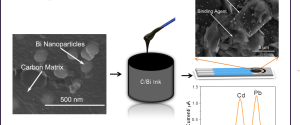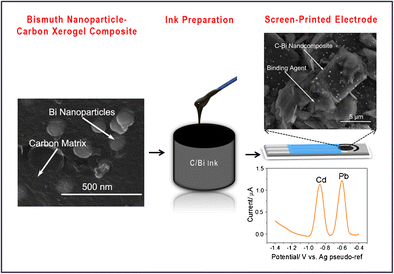
New paper accepted in Microchimica Acta
The work has resulted from a collaboration between the ICMAB, the CNM and the company Dropsens.
Screen-printed electrodes made of a bismuth nanoparticle porous carbon nanocomposite material applied to the detection of heavy metals (Pengfei Niu, César Fernández-Sánchez,* Martí Gich,* Carla Navarro-Hernández, Pablo Fanjul-Bolado, and Anna Roig, Microchimica Acta, , Volume 183, Issue 2, pp 617-623).
This work reports on the simplified fabrication and on the characterization of bismuth-based screen-printed electrodes (SPEs) for use in heavy metal detection.
A nanocomposite consisting of bismuth nanoparticles and amorphous carbon was synthesized by a combined one-step sol-gel and pyrolysis process and milled down to a specific particle size distribution as required for the preparation of an ink formulation to be used in screen printing. The resulting electrochemical devices were applied to the detection of Pb(II) and Cd(II) ions in water samples.
The porous structure of carbon and the high surface area of the bismuth nanoparticles allow for the detection of Pb(II) and Cd(II) at concentration levels below 4 ppb. The application of the SPEs was demonstrated by quantifying these ions in tap drinking water and wastewater collected from an influent of an urban wastewater treatment plant.
accepted paper, bismuth nanoparticles, electrodes, heavy metals, hot off the press, journal, Microchimica Acta, nanocomposite, nanoparticles, new paper, porous carbon, screen-printed, sensors


